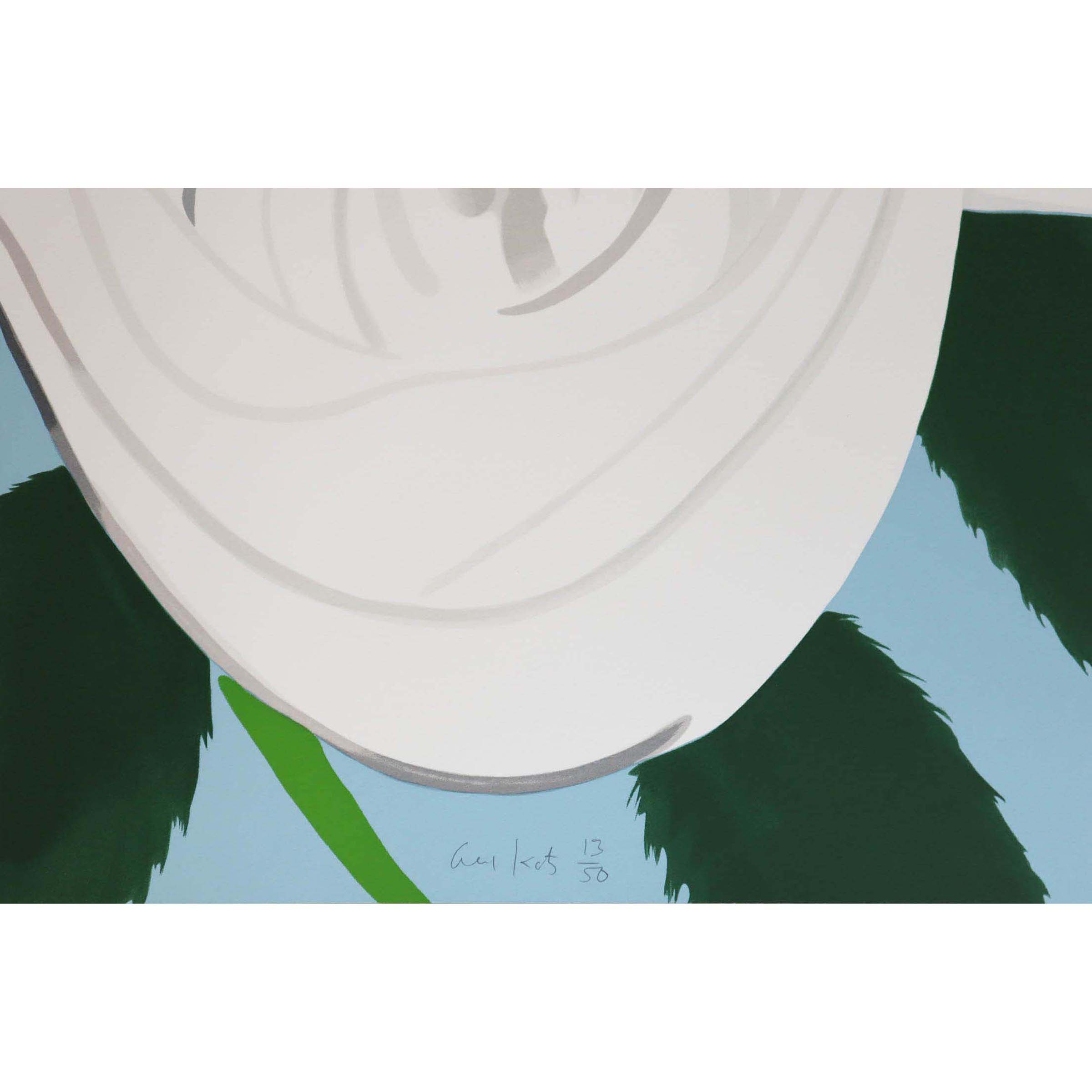Lot 95
Alex Katz (b. 1927)

Lot 95 Details
Alex Katz (b. 1927), American
WHITE ROSES, 2014
screenprint in colours on Saunders Waterford 425g paper, the full sheet
signed and numbered 13/50, there were also 15 artist's proofs, four printer's proofs and five hors commerce; published by Lococo Fine Art, St. Louis
42.5 x 84.3 in — 108 x 214 cm
Estimate $45,000-$65,000
Important:
This lot is not onsite and is not available for in-person preview.
Please refer to the condition report for details.
There may be up to 10 business days between when the work is purchased and when it can be collected at Waddington's, Toronto.
Contact our Specialist for more information.
Additional Images

Provenance:
Private Collection, Europe
Note:
This lot is not onsite and is not available for in-person preview. Please refer to the condition report for details.
There may be up to 10 business days between when the work is purchased and when it can be collected at Waddington's.
Contact our Specialist for more information.
Read More:
Alex Katz’s great genius lies in his ability to simplify, removing the inessential while never losing either elegance or rigor. His work is spare and unfussy, but never boring. The critic John Russell, in his review of Katz’s 1986 retrospective at the Whitney Museum, wrote that “the paintings look easy, the way Fred Astaire made dancing look easy and Cole Porter made words and music sound easy, but don't let's be fooled. When it comes to the art that conceals art, Katz is right in there with those two great exemplars.”
Printmaking has complemented Katz’s painting practice for decades, and he views his works on paper as extensions of his works on canvas. Katz has spent much of his career thinking deeply about the elusive nature of what makes a great print, explaining that “printmaking is a matter of producing the same image over and over, and the image able to stand up to that treatment isn’t easy to come by.”
Robert Storr, dean of the School of Art at Yale University and curator of the exhibition “Katz X Katz” notes that Katz’s flower paintings date back to the 1950s harkening back to his first encounters working en plein air in 1949 while studying at the Skowhegan School of Painting & Sculpture: “He was painting them full-scale like this from the beginning of his career,” and that Warhol’s large flower portraits actually came after Katz’s.
Katz himself explains that his work seeks to create a record of “quick things passing.” Though often thought of as a portraitist, Katz has long been interested in the landscape and the natural world. Critic Calvin Tomkins explains that Katz “make us see the world the way he sees it, clear and up close, with all but the most essential details pared away.”
We invite you to read more about Alex Katz’s prints on our blog.


